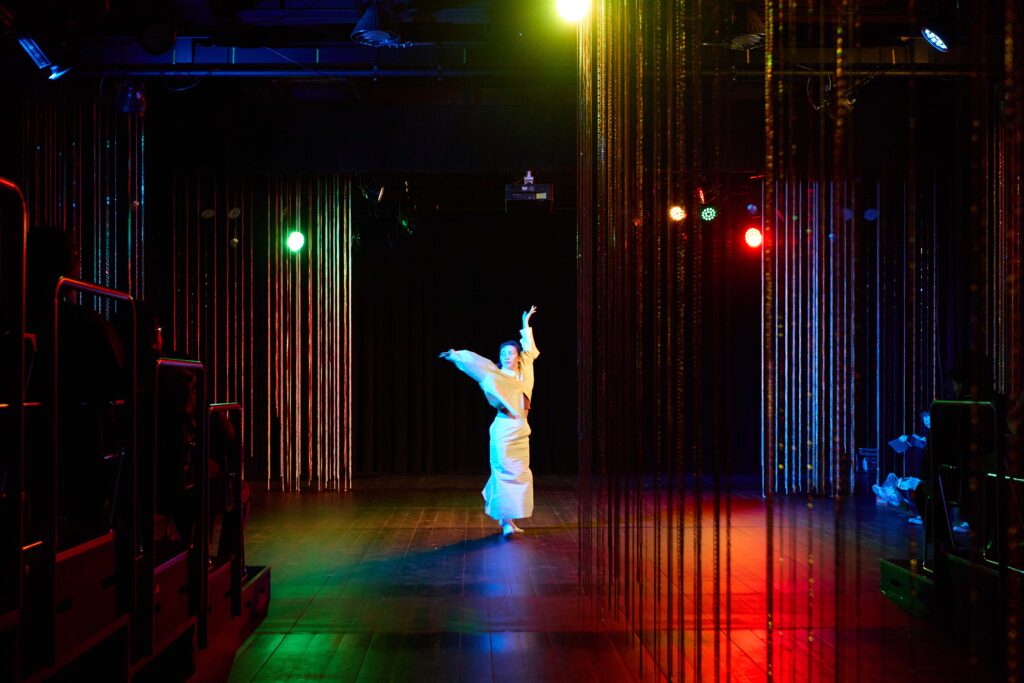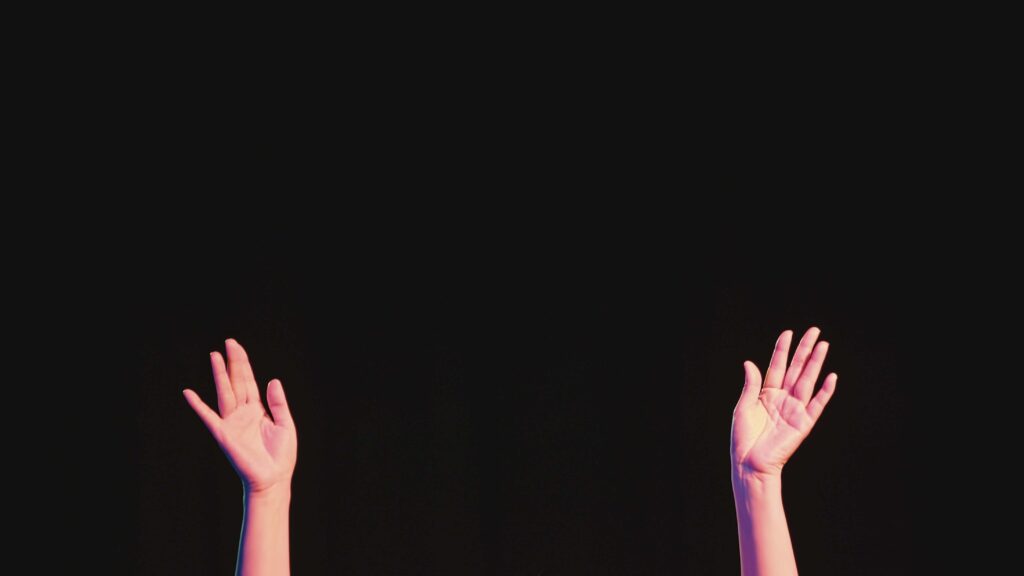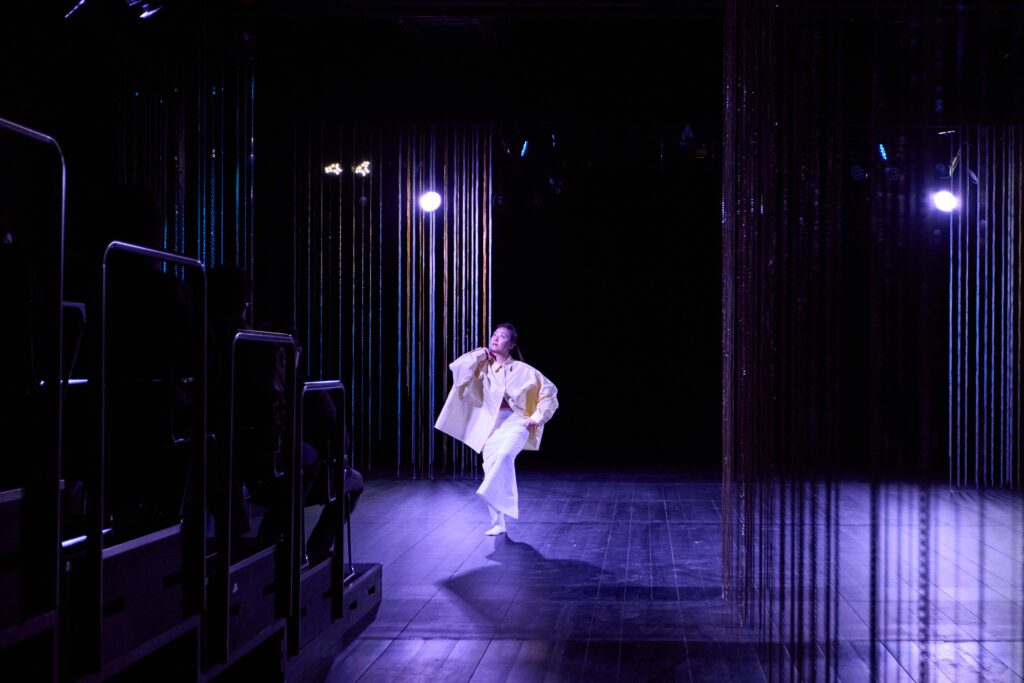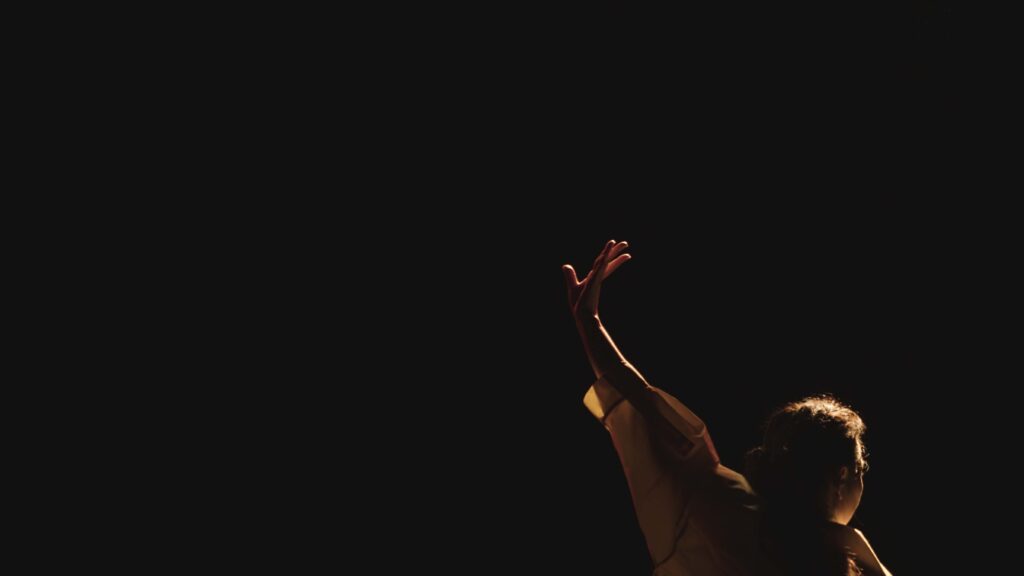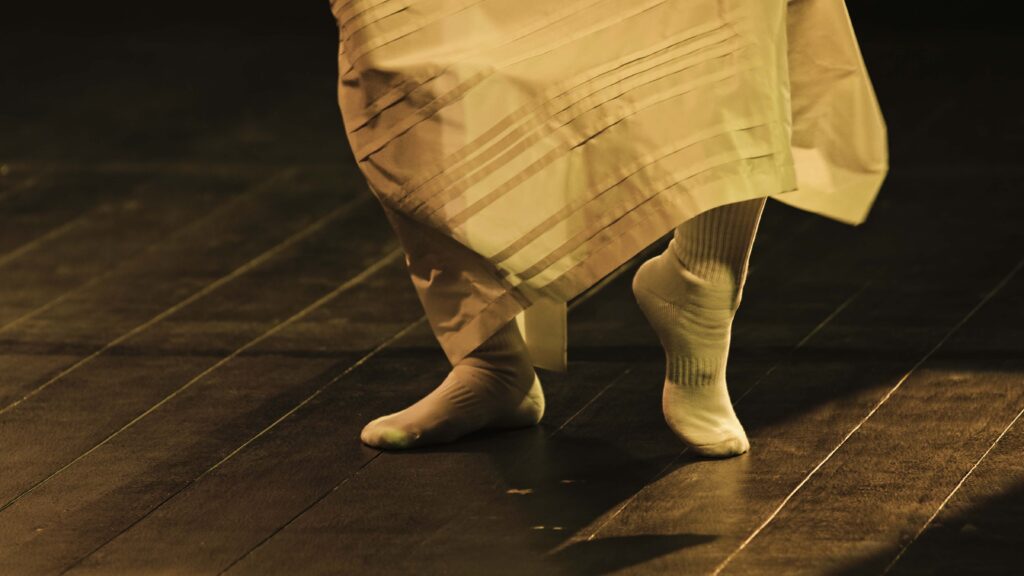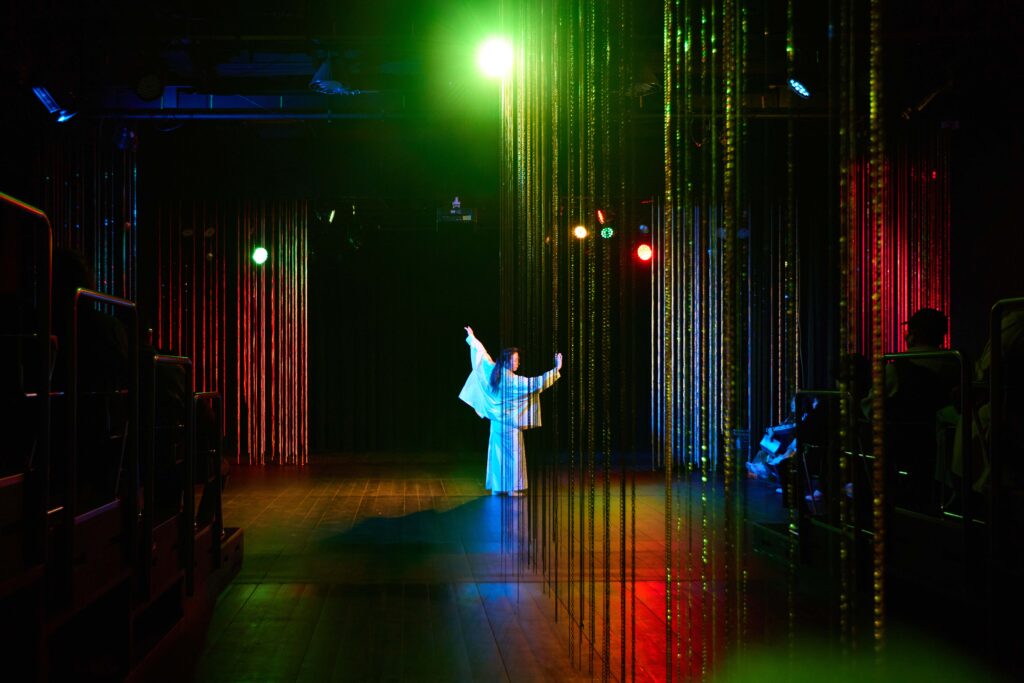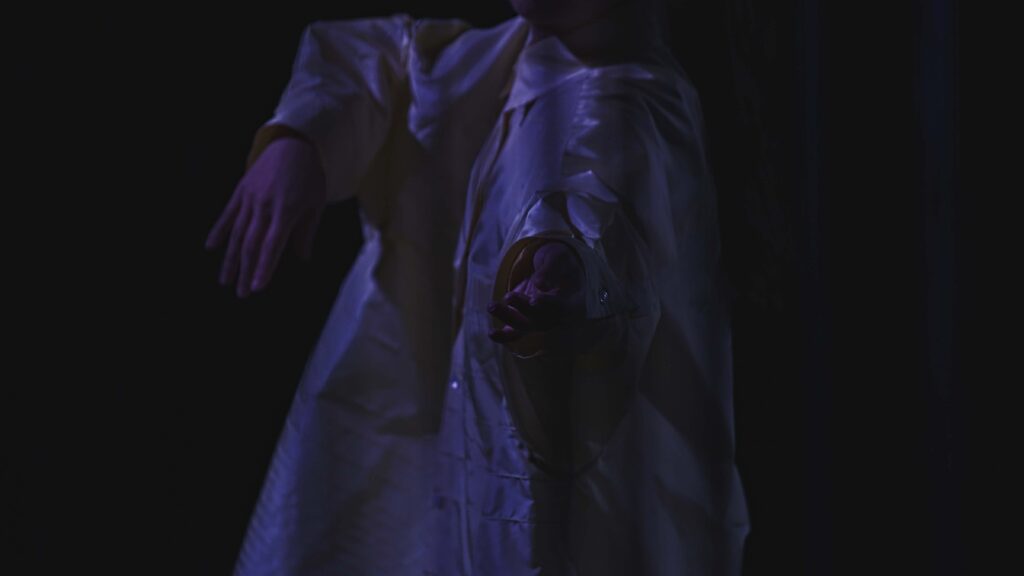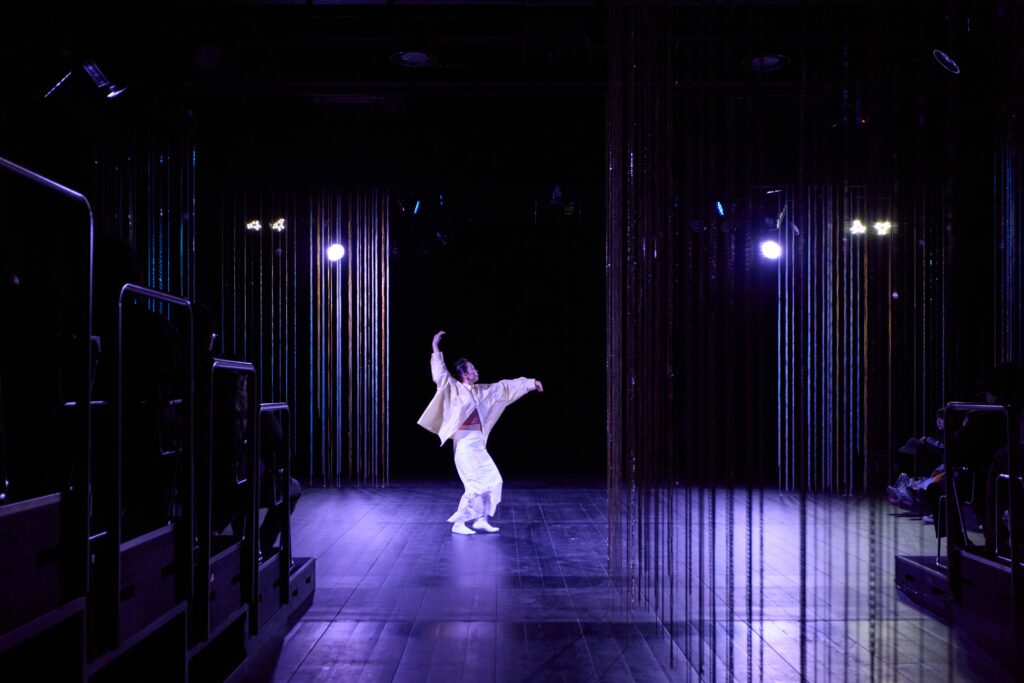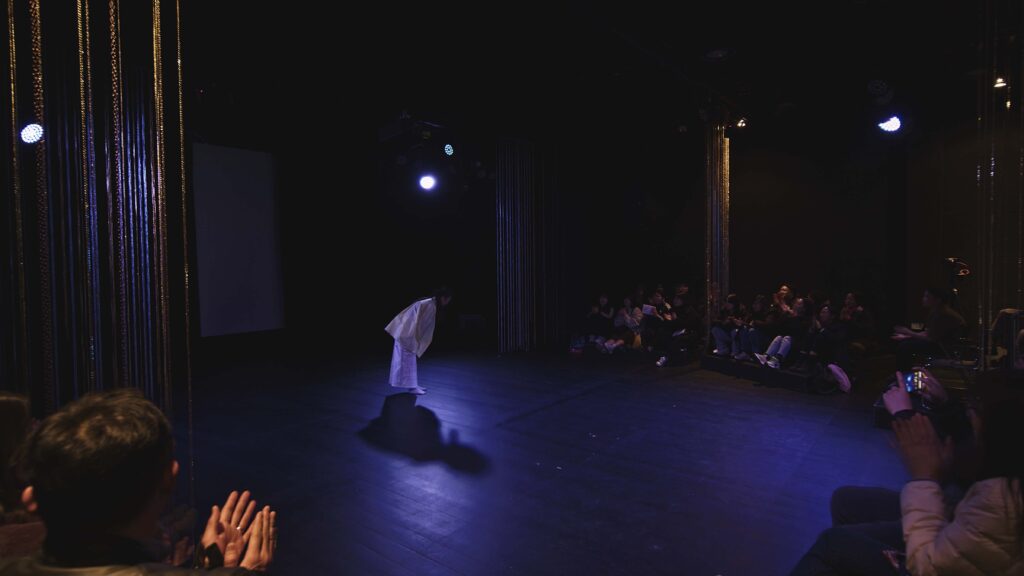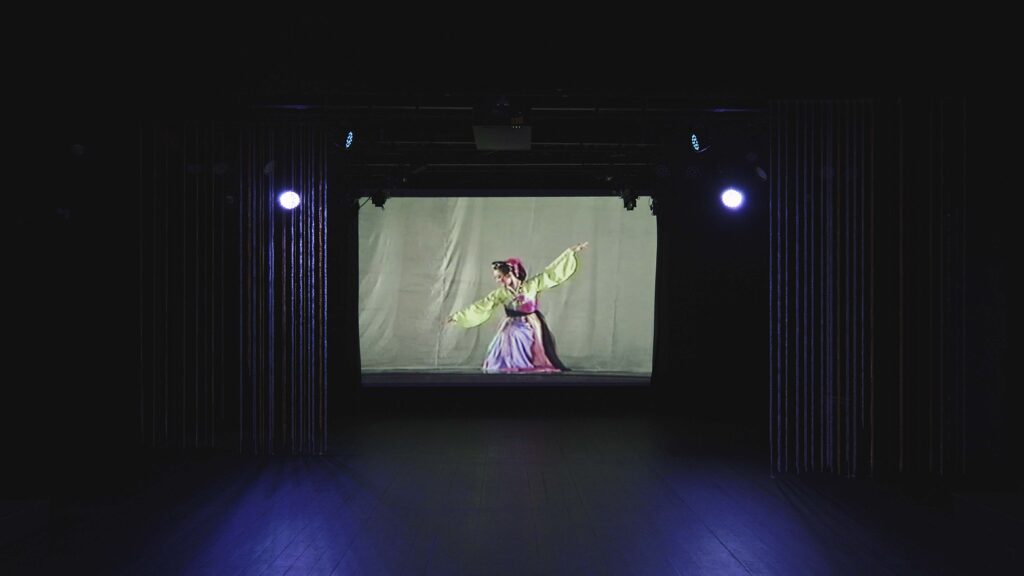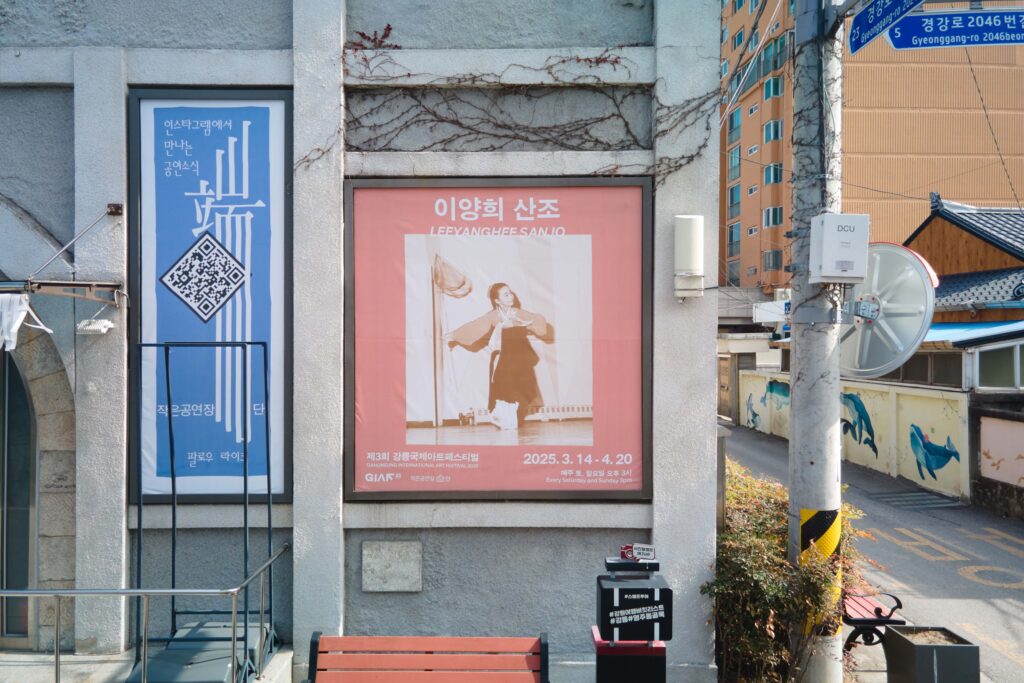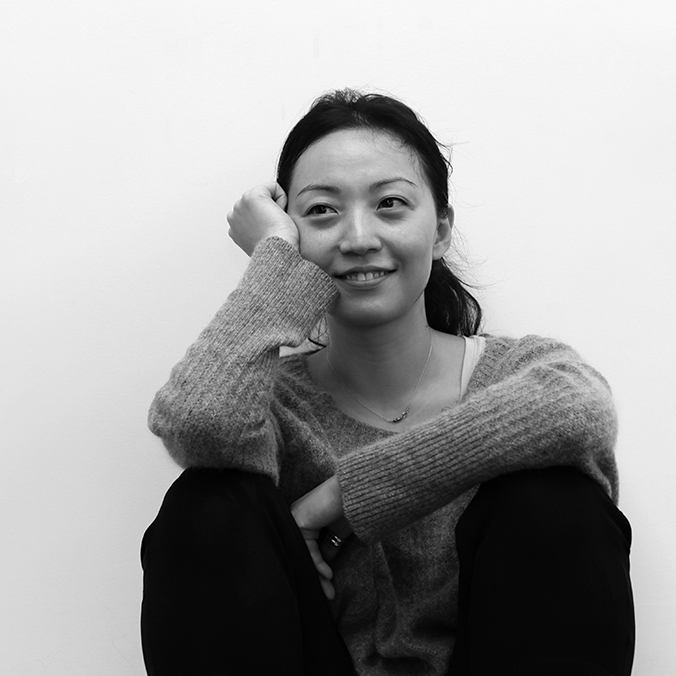EXHIBITION
ARTIST
- LEEYANGHEE SANJO, 2025, live performance, approx. 21min.
- LEEYANGHEE IPCHUM, 2020, 2025, single-channel video, color, sound (stereo), 3min. 3 sec.
Yanghee Lee’s work begins with critical questions around the forms and lineages of dance. Though initially trained under the umbrella of “Korean traditional dance,” she later recognized that what she had learned was not merely the transmission of tradition, but a hybrid form shaped by modern stage aesthetics. This realization led her to examine how particular dance forms are constructed and formalized overtime. It drew her attention to shinmuyong1—a modern dance tradition foundational to Korean contemporary dance.
Shinmuyong, pioneered by Choi Seung-hee, is characterized by its fusion of diverse cultural elements and its emphasis on choreographic documentation. Lee was immersed in this structure from a young age and came to understand how the idea of tradition is often systematized through such frameworks. She pays close attention to how the label of “tradition” becomes fixed in relation to national identity, and seeks to reframe dance within a deeper, more layered historical context.
She also critically examines conventional stage formats. Challenging the hierarchical divide between dancer and viewer found in traditional theater, Lee explores more reciprocal forms of performance that reclaim dance as a shared, everyday practice. These efforts stem from her awareness of how dance is often regarded in Korean society—as inaccessible or difficult to relate to. To challenge this, she has consistently developed experimental platforms and workshops, drawing on her lived experience of Korea’s underground club culture and her collaborative work within New York’s dance community.
As she observed the Dano Gut Ritual at the Gangneung Danoje Festival becoming increasingly formalized, Lee noticed how the shaman’s expressive freedom was being limited. This led her to question how living traditions can lose their vitality when they are shaped into fixed structures. That reflection became the starting point for her recent work, LEEYANGHEE SANJO.
Unlike her previous open-form performances, Lee focused on refining techniques that have been built up in her body over many years and shaping them into a choreographed structure. Because dance has no written score, technical knowledge is passed on only through the dancer’s body. Lee conceived this piece as a way to preserve and record movements that exist only as long as she herself can embody them.
In LEEYANGHEE SANJO, the artist brings the musical structure of traditional sanjo2—which flows from slow rhythms to faster ones—into the realm of dance. Each segment of sanjo has its own character, yet together they build toward a layered, intensifying rhythm. Lee applies this logic to movement, arranging gestures in a way that gradually increases density and energy. In doing so, she creates a performance that is not only a stage work but also a record of her embodied technique—a form of transmission through the body.
She also includes a layered comparison within the piece. In one section, she presents a video of herself performing a standing dance (ipchum3) at Yewon School. The footage is still used today in dance education, but Lee believes that the subtle technical nuances—its dynamics, tension, and flow—are something only she can fully realize. She re-performs the dance in her present body, then screens the archival video to highlight the contrast between the two versions.
Lee acknowledges that dance is a living form— one that naturally evolves over time. As training environments and social conditions shift, some techniques fade or disappear. She accepts this as part of dance’s nature, yet feels a responsibility to shape and share the knowledge she has accumulated. LEEYANGHEE SANJO is the beginning of that process. She plans to continue this work through future pieces such as ipchum 1, 2, 3 and further developments of the sanjo form. At its heart, her work reflects a continued exploration of what defines dance and how tradition might evolve through time.
Lee also reconsiders what it means to share time with an audience. She believes that a performance should allow both the performer and the audience to experience time in their own way, with moments where those timelines occasionally intersect. Even when the viewer loses focus, drifts away, and then returns, she embraces this as part of the experience—not a physical journey, but a psychological departure and return.
She carefully constructs her performances with these moments in mind, designing gestures and rhythms that can open up shared time. For Lee, the audience’s journey is never linear, but one shaped by layered memory. Rather than trying to control how the performance is received, she allows it to unfold naturally. For her, the moment when a viewer re-engages is the very heart of performance. The more often those moments occur, the deeper the impression a work can leave.
Yanghee Lee (b. 1976) is an artist who works with the language of performance. She often creates temporary theaters or presents her work in exhibition-like formats. Rooted in a modern form of Korean traditional dance (shinmuyong), Lee also actively immersed herself in Korea’s underground club culture as it gained popularity in the 1990s. Her work moves through the fluid, often undefined space between tradition and contemporary art, shaped by her own dance experience. Delving into both the essential qualities of Korean dance gestures and her own movement archetype, Lee treats everything that constitutes dance—body, pleasure, and form—as subject matter.
At GIAF25, Lee presented LEEYANGHEE SANJO and LEEYANGHEE IPCHUM. The works were inspired by sanjo and ipchum two forms derived from shinmuyong. Through the integration of her past video recordings into her recent live performance, the artist shaped a stage language that bridged past and present. Weekly workshop MASS, held alongside the performances offered audiences a chance to engage directly with the artist. Her practice challenges the power structures and normative systems embedded in tradition—structures largely shaped by Western modernity. In this inquiry, she envisions a new form of Gesamtkunstwerk: one rooted in collective assembly through dance.
Yanghee Lee’s major solo exhibitions include Axis and Foot (The Page Gallery, Seoul, 2024), IN (Whistle, Seoul, 2024), and Hail (d/p, Seoul, 2020). Major group exhibitions include the Busan Biennale 2024 Seeing in the Dark (Museum of Contemporary Art Busan, 2024) and Big Brother Blockchain (Nam June Paik Art Center, Yongin, 2024). Notable works include Shimmering, Aficionado, Twixt, Hail, and Gesamtkunstwerk. She was a resident artist at New York Live Arts (2011) and Movement Research (2014–2016), and a recipient of the Asian Cultural Council Fellowship in 2016.
Instagram: @leeyanghee_choreographic
- Shinmuyong refers to a modern form of creative dance that flourished in Korea for roughly half a century starting in the 1920s. First coined in 1926, the term described a new form of artistic movement distinct from traditional dance, developed primarily for stage performance. It encompassed restructured versions of traditional dances, Western styles such as ballet and modern dance, and entirely new movements guided by new aesthetic paradigms. With an emphasis on autonomy and experimentation, shinmuyong played a foundational role in shaping modern Korean dance and establishing the concept of “art dance” within Korean society.
↩︎ - Sanjo is a genre of solo instrumental music that emerged in the late 19th century. Typically beginning in a slow rhythm (jinyangjo) and accelerating gradually, sanjo balances musical logic with improvisation. Originating with Kim Chang-jo’s gayageum sanjo, it later expanded to other instruments such as the geomungo, daegeum, haegeum, and ajaeng, accompanied by janggu drum. Each school of sanjo is distinguished by its unique interpretation, shaped by the characteristics of the instrument, the performer’s technical mastery, and the expressive style developed by each master. Recognized as an Important Intangible Cultural Heritage since the 20th century, sanjo embodies the improvisational spirit and aesthetic values of Korean music. Dance works based on sanjo music form a key part of the traditional Korean dance repertoire, with many dancers treating sanjo choreography as a central focus of their practice. Emphasizing improvisation, the aesthetics of stillness within motion (jeongjungdong), and individual interpretation, these dances evolve through a dynamic interplay between rhythm and movement—unfolding slowly and quickly in turn, shaped by each performer’s unique style.
↩︎ - Ipchum—literally “standing dance”—is considered the foundation of Korean traditional dance. Often performed without costume or stage, it emphasizes basic movements such as hand gestures, footwork, and body turns. Its simplicity makes it both accessible and improvisational, and it has been passed down in a wide range of styles shaped by region and master. Notable lineages include the Kim Suk ja style from Gyeonggi and Chungcheong Province, the Lee Mae-bang style from Jeolla Province, and the Kwon Myunghwa and Choi Heesun styles from Gyeongsang Province. Also referred to as salpuri, improvised dance (jeukheungmu), or handkerchief dance, ipchum highlights the diversity and vitality of traditional Korean dance. While grounded in technical fundamentals, ipchum embodies the essence of traditional Korean dance—grace, rhythmic joy, and ecstatic energy. ↩︎
